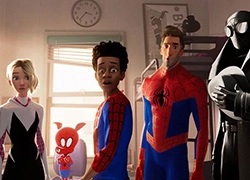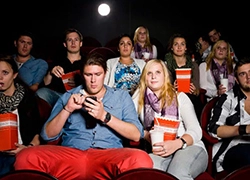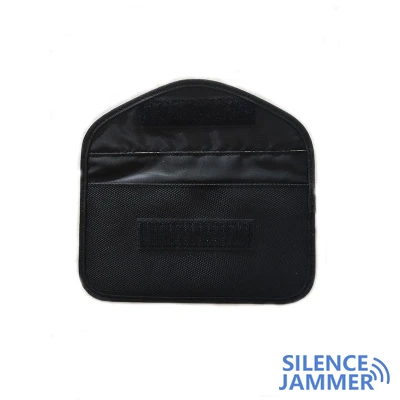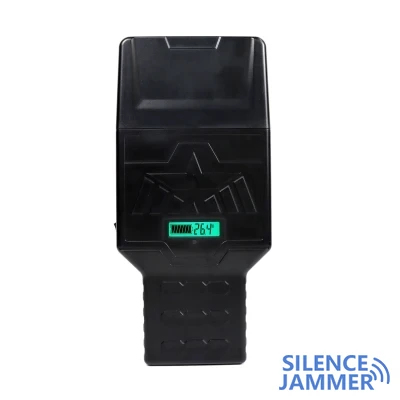Imagine that when you are sitting in a cinema with great anticipation, waiting for a long-awaited movie to start, suddenly, the audience next to you takes out their mobile phones and starts browsing social media. This situation is very common in cinemas, and for many people, it is undoubtedly a disappointing moment.

In 2023, blockbusters such as "Barbie", "Oppenheimer", and "Spider-Man: Into the Spider-Verse" made cinemas the focus again, attracting a large number of audiences to return to the cinema. However, as the audience returned, movie etiquette has shown a significant decline, especially the use of smartphones has become the main interference factor that plagues the viewing experience.

Mobile phone addiction and cinema challenges
Today, smartphones are deeply embedded in modern life. Data shows that 80% of Americans aged 18 to 44 check their phones as soon as they wake up every day, instead of saying hello to their partners, brushing their teeth or going to the bathroom first. Even more shocking is that 40% of Americans are addicted to their phones, checking them an average of 110 times a day. Even one-third of people would rather give up sex than give up their phones, which shows how important mobile phones are in people's daily lives.
This dependence on mobile phones has extended to movie theaters. It has become a common phenomenon for many people to casually pull out their phones to make calls and send text messages while watching movies. Although the audience's mobile phone use may not cause much trouble during concerts or sports games, this behavior is extremely disruptive during the movie. The screen light in the dark not only breaks the immersion of the theater, but also directly affects the viewing experience of other audiences.
Theaters' attempts to deal with the proliferation of mobile phones
In order to deal with this problem, theaters have tried different solutions. In 2016, AMC theaters considered setting up "text-friendly" theaters, allowing audiences to use mobile phones in these specific theaters. AMC CEO Adam Aron pointed out at the time that young audiences could not stand not checking their phones for a long time. Therefore, in order to attract these audiences, theaters that allow text messaging interaction became one of their strategies. However, this proposal triggered strong opposition and eventually had to be cancelled.

Although the cinema abandoned this plan at the time, the impact of smartphones on society is deepening, and cinemas may have to re-examine this issue in the future. As more young generations grow up and mobile phone usage habits are deeply rooted, cinemas may have to find more flexible ways to balance the traditional viewing experience with modern interactive needs.
The dilemma of using signal jammers
Although many cinemas have already stipulated that mobile phones are not allowed, how to thoroughly enforce this ban remains a problem. As early as 2003, the Savoy Cinema in Dublin tried to block mobile phone signals with cell phone jammer s to prevent audiences from using mobile phones during movie screenings. However, this measure soon attracted the attention of regulators, and the cinema even faced the threat of fines of up to 25,000 euros. This shows that although cinema signal jammers seem to be effective, their legality issues make it difficult for cinemas to adopt them widely.
Special moments brought by mobile phones: from interference to interaction
Although the use of mobile phones is offensive in most cases, it can sometimes bring unexpected social fun. In certain occasions, audiences will instead generate a kind of social interaction because of the use of mobile phones. For example, when watching the classic film "Psycho", when Bates Motel first appeared on the screen, some viewers took out their mobile phones to take pictures of this moment. This behavior did not cause disgust, but formed a kind of tacit understanding among the audience, and everyone shared this classic moment together, which increased the fun of watching the movie.
A similar situation also occurred in the premiere of "Spider-Man: No Way Home". When the climax of the movie appeared, many viewers lit up the flashlights of their mobile phones to celebrate this exciting scene. This collective interaction filled the theater with a cheerful atmosphere, and the sense of connection between the audience was enhanced. At this moment, the mobile phone is no longer a distraction from watching the movie, but a part of social interaction.
Finding the balance point of mobile phone use
Faced with the duality of mobile phones, the future challenge of cinemas is how to find a balance point for moderate use of mobile phones while ensuring the viewing experience.
In most cases, the use of mobile phones will undoubtedly break the immersion of the movie and interfere with the viewing experience of other viewers. But in very few special moments, mobile phones can also become a link for interaction between audiences and increase the atmosphere in the theater.
To meet this challenge, audiences need to learn to control themselves and avoid over-reliance on mobile phones, while theaters can also find a balance between technology and viewing experience by introducing appropriate interactive links. Through joint efforts, movie etiquette can return to its purest form, while also allowing mobile phones to bring more interactive fun to audiences at specific moments.





